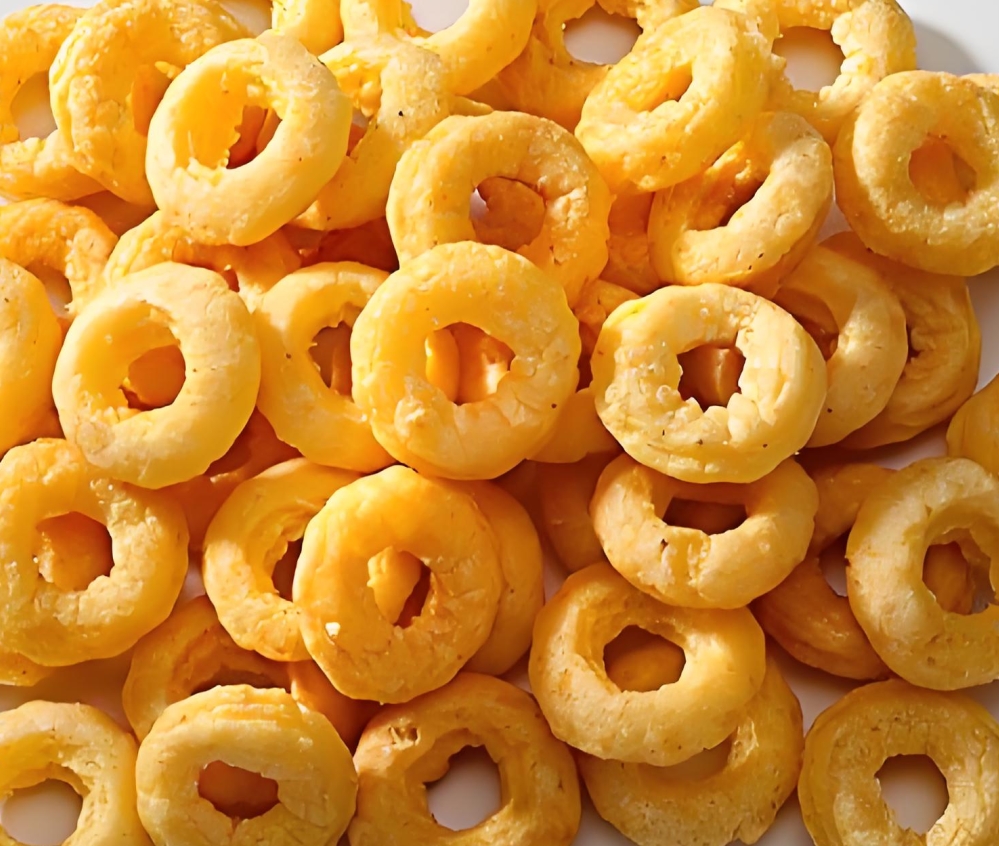Как контролировать коэффициент расширения слоеных снеков
The expansion ratio is a critical quality attribute of puffed snacks, directly influencing their texture, density, and overall consumer appeal. Achieving the ideal level of puffing—crispy and airy without being too hard or too fragile—requires careful control of several factors during production. Here’s a guide on how to effectively manage the expansion degree of puffed foods.
1. Выбор сырья
The foundation of good expansion starts with the choice of raw materials.
- Starch-Based Ingredients: Cereals like corn, rice, wheat, and potatoes are commonly used due to their high starch content. The amylose and amylopectin ratio in starch affects expansion; higher amylose often leads to better puffing.
- Содержание влаги: Raw materials must have optimal moisture levels (typically between 12-15%) to facilitate superheating and vaporization during processing.
2. Pre-Processing Conditions
Preparation of the dough or pellets prior to puffing is crucial.
- Mixing and Hydration: Ensure uniform water distribution in the dough to promote consistent starch gelatinization.
- Particle Size: Finely ground flour or uniform semolina improves expansion homogeneity.
- Pre-Cooking: Extrusion-cooking or pre-gelatinization helps condition the starch for better puffing.
3. Controlling Processing Parameters
The expansion process—whether via extrusion, frying, or hot air puffing—must be precisely managed.
Extrusion Puffing
- Температура: High barrel temperatures (120-180°C) cause moisture to flash off, creating steam that expands the product. Temperature must be optimized to avoid under- or over-puffing.
- Давление: Sudden pressure drop at the die exit enables rapid expansion. Adjusting screw speed and die design can modulate pressure release.
- Screw Configuration: Shear force and compression ratios should be tuned to degrade starch appropriately without burning.
Frying or Hot Air Puffing
- Oil Temperature: For frying, maintain oil at 180-200°C to ensure quick vaporization and expansion.
- Air Flow and Temperature: In oven puffing, consistent heat and airflow are key to uniform expansion.
4. Moisture Management
Moisture acts as the blowing agent during puffing.
- Initial Moisture: Too much water leads to dense products; too little limits expansion.
- Сушка и охлаждение: Post-puffing, products should be dried to stabilize structure and prevent collapse. Controlled cooling helps retain crispness.
5. Formulation Adjustments
Ingredients can enhance or inhibit expansion.
- Leavening Agents: Baking soda or acids can release gas to supplement steam-driven expansion.
- Жиры и масла: Small amounts improve texture but excess oil can inhibit puffing.
- Proteins and Fibers: High protein or fiber content may reduce expansion; balance with starch sources.
6. Equipment and Design
- Die Shape and Size: Determines product geometry and expansion direction.
- Process Automation: Use sensors for real-time monitoring of temperature, pressure, and moisture to ensure consistency.
7. Quality Assurance
Regular testing ensures consistent expansion:
- Measure Expansion Ratio: Compare volume or diameter before and after puffing.
- Texture Analysis: Use a texture analyzer to check crispness and hardness.
- Microscopy: Examine cell structure to assess uniformity.
Заключение
Controlling the expansion of puffed snacks involves a multidisciplinary approach combining raw material science, process engineering, and continuous monitoring. By optimizing moisture, temperature, pressure, and formulation, manufacturers can achieve the perfect balance of lightness and crunch that consumers enjoy. Consistency is key—each step must be controlled to produce high-quality puffed products every time.








